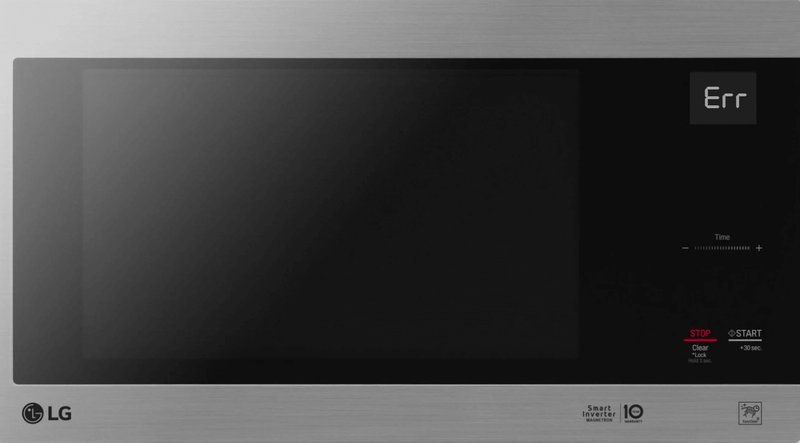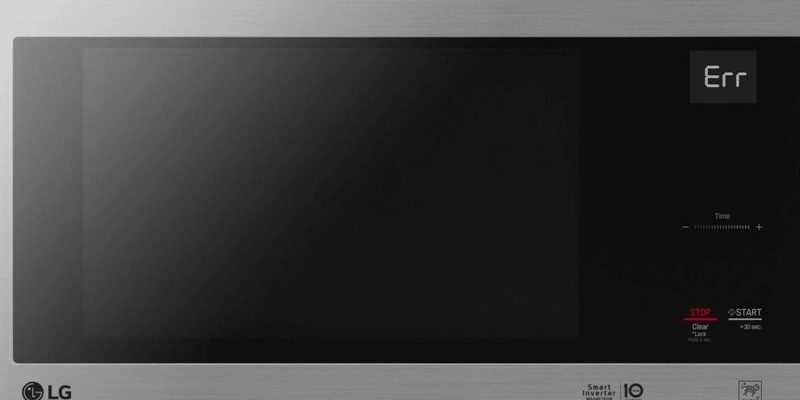
Picture this: You’re preheating your oven for a much-anticipated homemade pizza night when suddenly the display starts blinking with an unfamiliar code—F1. It might feel like your oven is speaking a foreign language, throwing your culinary plans into chaos. But here’s the deal: understanding what this error means is the first step towards resolving it. By the end of this guide, you’ll not only know what F1 signifies but also gain practical advice on how to get your appliance back on track.
Understanding the F1 Error Code on LG Ovens and Ranges
The F1 error code on your LG oven is essentially its way of waving a red flag to catch your attention, letting you know there’s a malfunction. But what exactly does this cryptic code stand for? In simple terms, an F1 error generally indicates a problem with the oven’s control board or the oven sensor. Think of the control board as your oven’s brain, coordinating all its essential functions. When it malfunctions, it’s like your oven has a temporary “brain freeze.”
You might be wondering why this error pops up in the first place. Well, several factors can trigger the F1 code. It could be due to a faulty temperature sensor, which acts much like a thermostat. If this sensor isn’t working correctly, your oven might struggle to maintain the right temperature, causing the control board to detect an error. Alternatively, electrical surges or simply wear and tear over time can damage the control board, landing you with an F1 code.
So, what should you do if you’re greeted by this code? First, don’t panic—your oven isn’t automatically destined for the scrap heap. Often, the solution can be simpler than you expect. In many cases, resetting the oven can clear minor glitches, similar to rebooting a computer. We’ll dive into more detailed troubleshooting steps in the next section.
How to Troubleshoot and Fix the F1 Error Code
When you first see an F1 code on your LG oven, your instinct might be to call a repair technician right away. While that’s a valid option, there are a few things you can try first, potentially saving both time and money. Imagine it as diagnosing a car problem before heading to the mechanic—sometimes a quick fix is within your grasp.
Start by disconnecting the power to your oven for a few minutes. This might sound too simple to be true, but think of it as giving your oven a chance to rest and reset. Unplug the appliance or switch off the circuit breaker, wait for about five minutes, and then restore the power. This method can resolve many electronic hiccups, effectively resetting the control board.
If the F1 code persists, you might need to delve a little deeper. One common cause of this error is a faulty oven temperature sensor. Checking this sensor requires accessing the oven’s interior, which should be approached with caution. If you’re not comfortable taking things apart, contacting a professional might be your best bet. However, if you’re a bit more adventurous, you could use a multimeter to test the sensor’s resistance, comparing your findings with the specifications in your oven’s manual.
Should these steps not resolve the issue, it’s time to consider the control board itself. Replacing a control board isn’t typically a do-it-yourself job unless you’re experienced with appliance repairs. A professional technician can assess whether the board is truly at fault and replace it if necessary.
Preventing Future F1 Error Codes
Once you’ve tackled the F1 error code, you’ll naturally want to prevent it from making another untimely appearance. Like taking care of a car, regular maintenance is key to keeping your oven in top shape. But what exactly does that entail?
Periodically cleaning the oven is one practical step. Dust and grime can build up around controls and sensors, leading them to malfunction. Keeping these areas clean helps ensure they’re working properly. It’s also wise to check the oven’s connections occasionally. Over time, vibrations and heat can cause wires to loosen or connectors to degrade. Ensuring everything’s snugly connected can prevent future control board issues.
Beyond cleaning, be mindful of electrical surges. Using a surge protector for your kitchen appliances can shield sensitive components from unexpected voltage spikes. This small investment can save you from dealing with more error codes or costly repairs down the line.
Finally, consider having your appliances professionally inspected every few years. A technician can catch potential issues before they become major problems, giving you peace of mind and helping extend your oven’s lifespan. By staying proactive, you can keep your kitchen running smoothly, ensuring that those cherished family meals go off without a hitch.
In conclusion, while the F1 error code might initially seem like a daunting challenge, remember that knowledge is power. By understanding what this code means and knowing how to troubleshoot it, you can handle your LG oven’s quirks with ease. Happy cooking!
